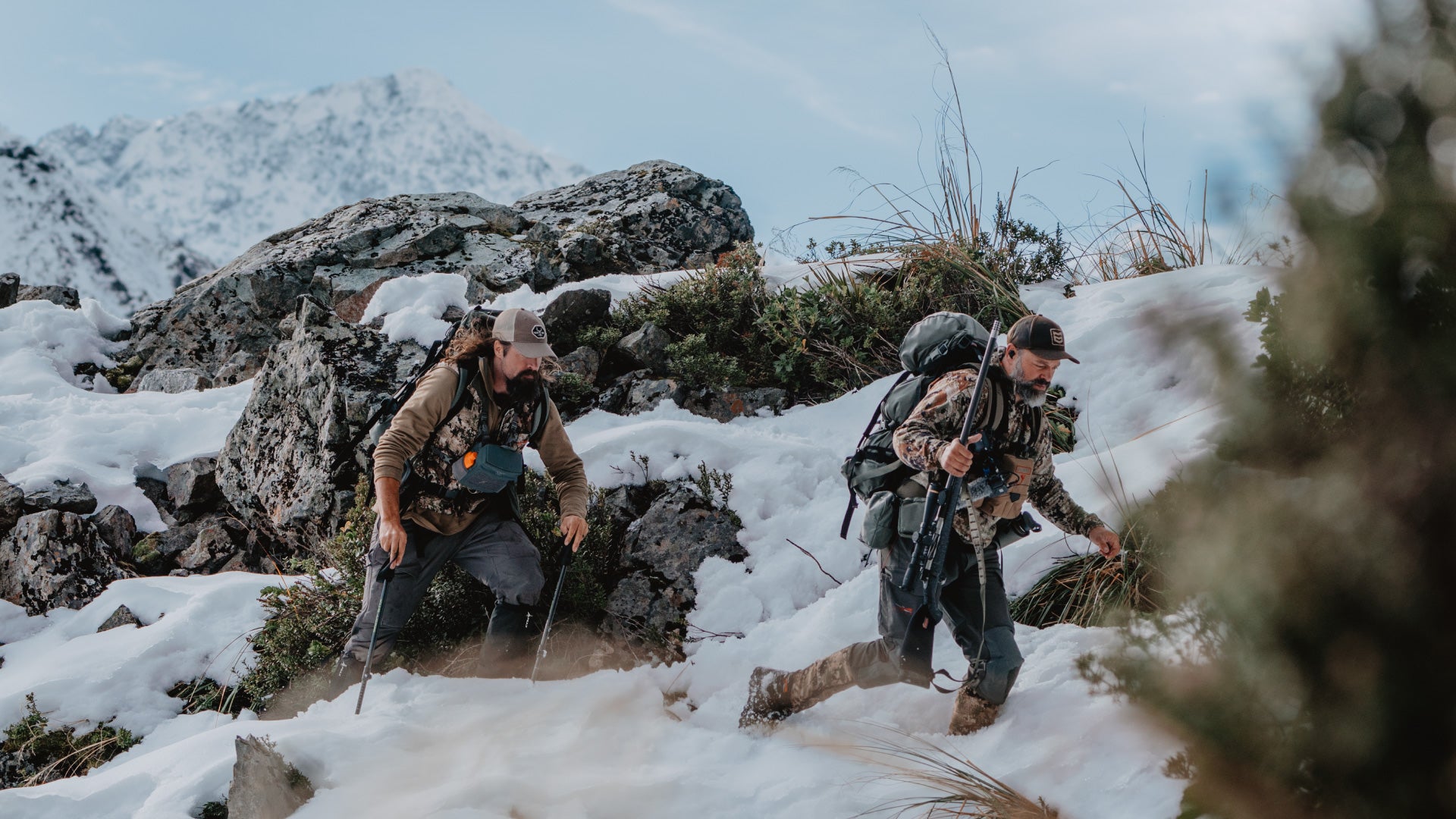RYAN LAMPERS.
When you think about trekking poles, you probably imagine adjusting them to match your height, keeping your elbows at an exact 90-degree angle. But what if we told you that using trekking poles shorter than you expect can give you better support, reduce fatigue, and improve your backcountry performance?
Ryan Lampers aka STHEALTHY HUNTER, a seasoned backcountry hunter, suggests that the best way to use trekking poles is more like using a cane than a traditional hiker would. By keeping your arms nearly straight and using only the top portion of the pole, you'll not only increase leverage but also preserve your energy for those long miles ahead.

WHY STRAIGHT ARMS WORK BETTER
Think about it: if you're trying to stop someone from moving toward you, you don’t bend your elbows—you extend your arms for maximum resistance. The same logic applies to trekking poles. When you keep your arms straight (or nearly straight) while gripping the poles, you're able to transfer your body weight more efficiently into the ground. This reduces the impact on your legs and joints while providing better stability over uneven terrain.
Ryan’s technique is simple: shorten your poles so that you rely more on the top section. This positioning helps you to use the poles like a cane, delivering better leverage with less effort. Over a long trek, especially in rugged backcountry environments, this can make a significant difference in how your body handles the stress of hiking with heavy loads.
The entire PEAX Backcountry Trekking Pole Series was designed with this cane-like technique in mind. Featuring a unique top grip, the poles can be comfortably palmed and used more like a cane than traditional trekking poles. This ergonomic design offers greater control and comfort, especially when you're using the top of the pole as your primary point of contact.

THE ENERGY-SAVING SECRET
Trekking poles are designed to give you an extra set of "legs" for support, but many people make the mistake of keeping their arms bent at a 90-degree angle. While it might seem natural, this positioning forces your arms to do more work than they need to. By shortening the poles and using your arms in a straighter position, you distribute more of the load through your shoulders and back rather than through your forearms and elbows.
The result? Less arm fatigue and more endurance over time. When you're logging long miles with a heavy pack—whether you're carrying gear, quartered elk, or hunting equipment—you’ll appreciate the energy savings. The right technique could be the difference between pushing through those final miles or hitting a wall.

WHY LEVERAGE MATTERS
When you're hunting in the backcountry or hiking steep terrain, leverage can mean the difference between a comfortable trek and an exhausting one. Shorter poles give you more direct leverage against the ground, allowing you to stabilize yourself with minimal effort. This extra control is crucial when you're navigating steep descents, uneven ground, or even river crossings.
The entire Backcountry Trekking Pole Series are designed with this in mind, offering adjustable lengths that make it easy to find the perfect shorter setting for maximum leverage and control. Their hybrid carbon fiber and aluminum construction ensures that while you're shortening your poles, you're not sacrificing durability or strength in rugged conditions.
FINAL THOUGHTS: THE BEST WAY TO USE TREKKING POLES
If you're looking for the best way to use trekking poles, think about the way Ryan Lampers approaches it. Use them like a cane, keep your arms straighter, and adjust the pole length shorter than you might have thought necessary. Your body will thank you for it, especially when you're miles deep in the wilderness, carrying a heavy load, and looking to reduce fatigue.
So, next time you're packing for a hunt or a backcountry hike, remember this tip: shorten your hiking poles for better leverage, less fatigue, and improved support. Whether you're using the Backcountry Elite Trekking Poles or another Backcountry model, this adjustment could be the game-changer for your next adventure.





